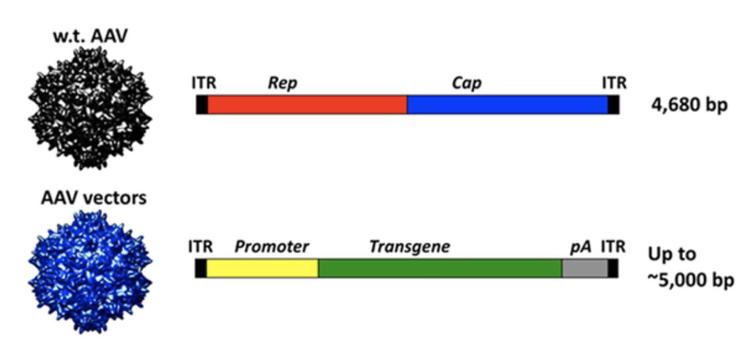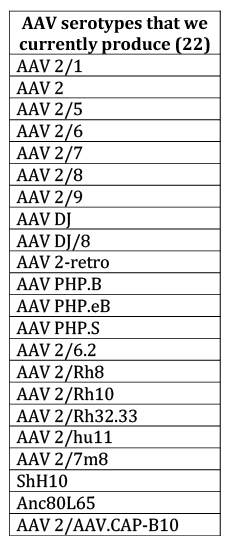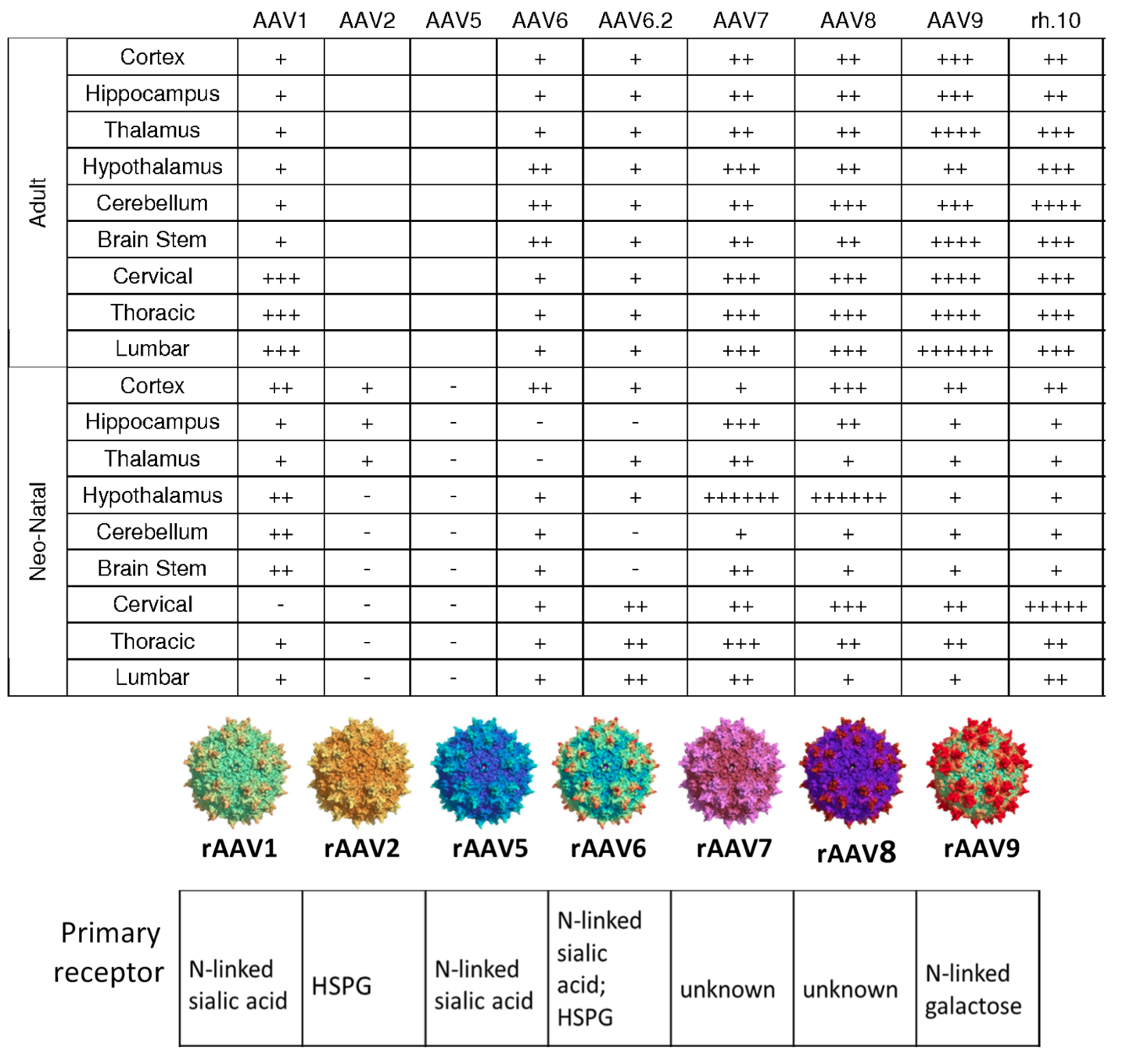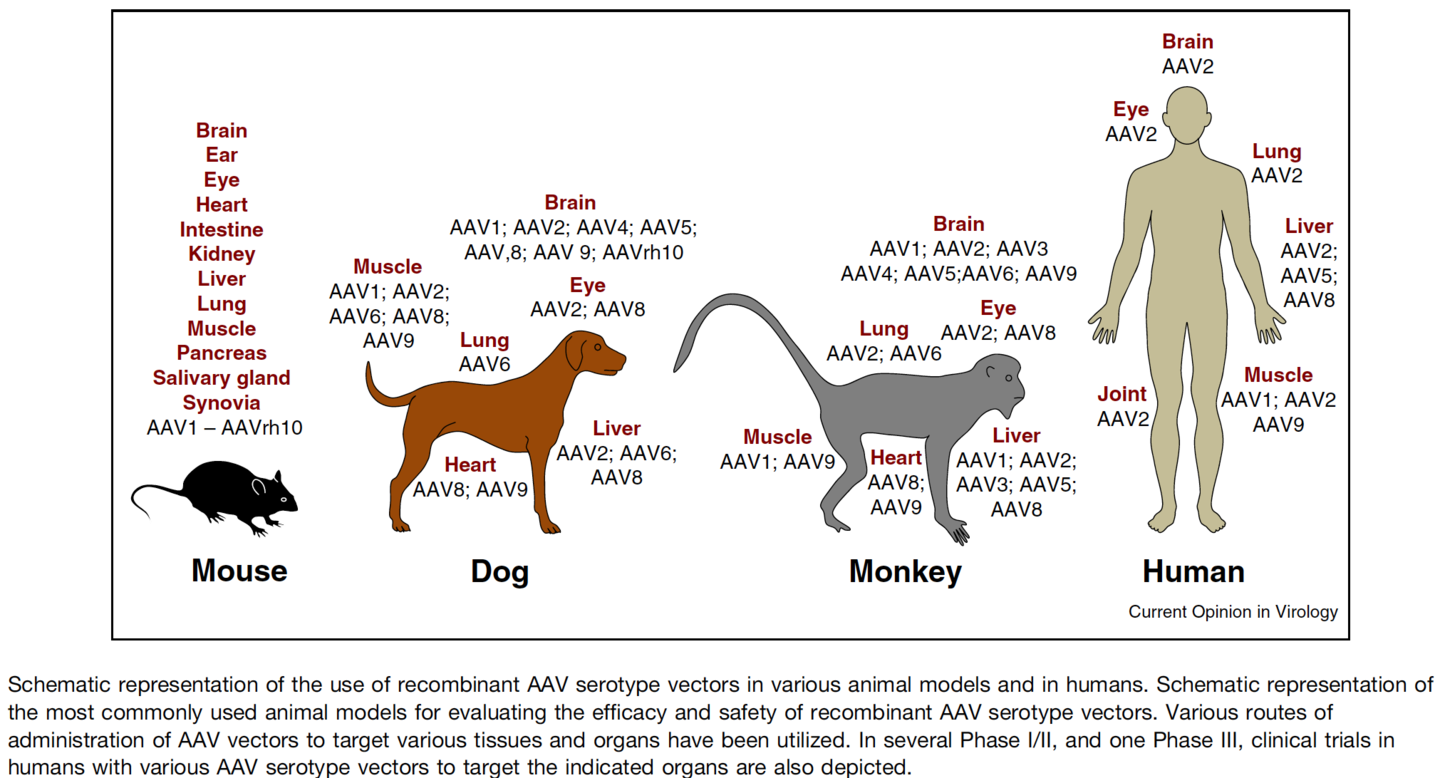Adeno- Associated Virus (AAV)

AAV is a non-enveloped, replication deficient virus of the Parvoviridae family.
The AAV capsid is 20 nm in diameter and contains a 4.7kb single-stranded DNA genome.
rAAV is a good tool for gene-transfer in the CNS because:
- It can be used for long-term stable gene expression in CNS cells.
- It has little to no toxicity.
- It can be produced in high titers and is safe to handle.
- It has different naturally occurring as well as synthetically made serotypes which can be exploited to infect different cell types with differing onset of gene expression.
Major drawback of rAAV: it can only incorporate a max of 4.9 Kb of DNA including ITRs into its capsid.
We currently produce 21 different rAAV serotypes. Upon request we can discuss the feasibility of making additional serotypes as well.

AAV-DJ and AAV-DJ/8 are hybrid capsids containing motifs of 8 different serotypes (see paper)
The following tables show transduction efficiency of different AAV serotypes in the CNS tissue of rodents. The differences in tropism are mainly attributed to the fact that AAV serotypes bind to different cell receptors.


Other viruses. Please contact us directly to discuss production of any of the following:
- Production of replication competent herpes simplex virus (HSV-1).
- Production of replication competent pseudorabies virus (PRV).
- Production of replication incompetent rabies virus (RABV).
- Production of replication incompetent gammaretrovirus (RV).
- Consultation in the design of custom viruses and preparation of plasmids required for virus production.
- Custom cloning.
Figures adapted from:
AAV Biology, Infectivity and Therapeutic Use from Bench to Clinic. Melisa A. Vance, Angela Mitchell and Richard J. Samulski. http://dx.doi.org/10.5772/61988.
https://patentimages.storage.googleapis.com/WO2011133890A1/imgf000043_0…
http://www.discoverymedicine.com/Elisa-Masat/2013/06/27/humoral-immunit…; Discovery Medicine; ISSN: 1539-6509; Discov Med 15(85):379-389, June 2013.
http://dx.doi.org/10.1016/j.coviro.2016.08.003 (Arun Srivastava. Current Opinion in Virology, 2016, 21:75-80)

